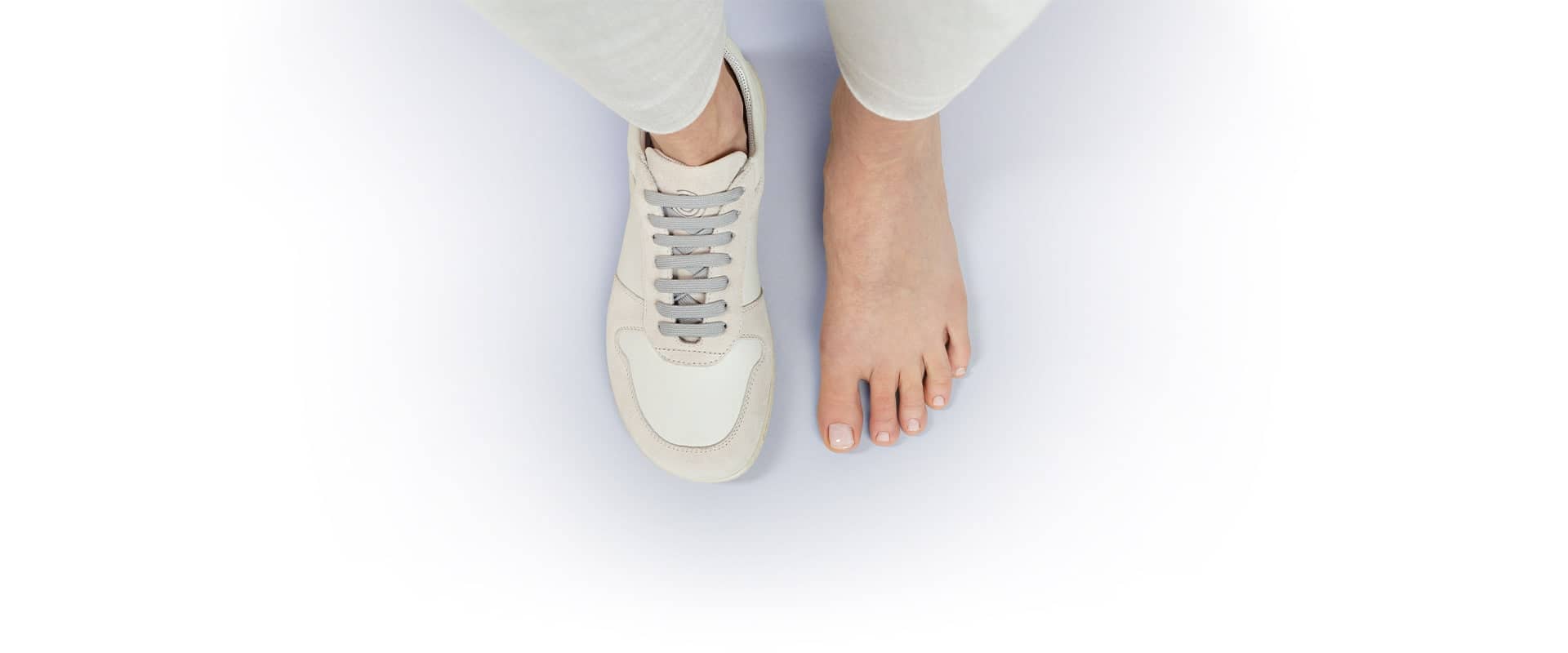Are barefoot shoes healthy, or not?
Groundies barefoot shoes are now popular classics in the barefoot scene. However, there are still different views as to whether barefoot shoes are healthy or not. We explain this in following text.
These days, everyone is talking about walking barefoot. In particular, barefoot shoes have not only seen increased sales in recent years among nature and outdoor enthusiasts - they have also become a part of the everyday life of health-conscious people. However, people still get skeptical looks now and then when wearing barefoot shoes (also called minimal shoes). Are barefoot shoes healthy, or not? Basically, what we can say is that barefoot shoes, with their minimalist nature, are a way of returning to the natural form of human movement. Walking barefoot - whether with bare feet in the summer or in comfortable barefoot shoes - enables more direct contact with the ground and more room for the toes to move than would be possible with stiff footwear.
Modern footwear versus flexible barefoot shoes - what is healthy?
Modern footwear, be it sneakers, boots or pumps, is a highly fashionable contribution to your wardrobe. However, tight shoes, stiff soles and high heels ensure that our feet and toes have little room for movement. The more solid and stiff the footwear, the less our feet are able to execute their natural rolling movement. Thick soles in particular cause our heel to touch the ground too often. This leads to our joints, bones and tendons being more burdened than necessary. Not infrequently the result is increasing pain in the knees, hips, and back, and an overall worsening of one's posture. Barefoot shoes have the advantage in this regard in that their thin and flexible soles support the feet's natural rolling movement and their flat soles enable a straight body alignment.


Minimal shoes are in fashion - how healthy are they?
Barefoot shoes are known to have "less to them" than cushioned street shoes. So what makes a good barefoot shoe? At Groundies, barefoot shoes have three main features:
- A zero heel (i.e. a flat sole without a heel) that ensures a straight body alignment
- A thin and flexible sole for more contact and sensitivity
- A wide toe box for more stability and room for movement
As you can already see with these three barefoot shoes characteristics, Groundies lives by the principle of "less is more" in its production of everyday shoes. So why can it be healthy to walk barefoot? The answers to this question can be found in the five health benefits of barefoot shoes listed below:
- Barefoot shoes make it easier for our feet to roll naturally
- This strengthens the foot's muscles and arch
- More sensitivity, which promotes a more mindful gait
- The flat standing and walking enables a straight body alignment
- Barefoot shoes can also prevent and counteract foot deformities
Basically, in healthy barefoot shoes, the more the foot has to work, the more actively it will be trained over time. Modern, stiff shoes in particular are often counterproductive, as the foot is usually so "crammed" or overstabilized that it atrophies over time. In contrast, barefoot shoes, with their flexibility, provide a targeted training of the foot muscles. This also makes barefoot shoes an ideal option for children.
How healthy are barefoot shoes really?
Healthy barefoot walking #1: the rolling movement
One of the most important differences that barefoot shoes have compared to conventional shoes concerns the rolling motion of our feet. Barefoot shoe soles are much thinner and more flexible, which allows the feet and toes to better perform their natural function in the walking movement. Because the sole is also thin in the heel area, the rolling movement is not determined by the shape of the shoe or the sole. Instead, it takes its natural course. For this reason, a well-trained foot will absorb a step just as well as it would with the cushioning of a thick sole. However, there is also the advantage that it puts less stress on the joints over the long term.
Healthy barefoot walking #2: strengthening your foot muscles
Minimal shoes / barefoot shoes have a much thinner and more flexible sole. But that also means for the foot that it has to work more when you are wearing them, be it normal walking or even balancing oneself on uneven floors. Both the foot muscles and the leg muscles are significantly more strained when you are walking in barefoot shoes, and are trained the most as a result. For people with flat feet, for example, this provides the advantage of allowing them to rebuild their arch over the long term. Essentially, strengthened foot muscles can also significantly reduce your risk of twisting an ankle. In addition to adults, barefoot shoes are also good for children with regard to counteracting foot deformities at a young age.
Healthy barefoot walking #3: more sensitivity and mindfulness
The thin sole in barefoot shoes provides more contact with the ground, and the foot is more sensitive as a result. All of our Groundies are equipped with a minimal sole, which means that when you walk, you feel the ground on your heels, balls and toes with a notable intensity. As a result, grass, roots, stones and even the temperature of the ground are directly and tangibly transmitted to the foot, providing you with a new awareness of the ground. This also leads to a more mindful gait, as you now pay more attention to the ground. Experience with barefoot shoes has also shown that their wearers walk more slowly as a result.
Healthy barefoot walking #4: a straight body alignment thanks to flat standing
Wearing barefoot shoes is also healthy due to that fact that they allow you to maintain a straight and upright posture. By design, Groundies barefoot shoes have no drop, so in other words, no heel. By allowing the feet to stand flat on the floor from heel to toe, the body assumes a straight alignment. Standing and walking straight is the most natural form of movement, which also has a positive effect on your joints, knees, hips and back. As a result, barefoot shoes can ensure that back and joint pain are reduced over the long term, or do not arise in the first place.
Healthy barefoot walking #5: prevent or counteract deformities
Once you have taken a liking to healthy barefoot shoes, at Groundies you will find a wide range of barefoot shoes for women and barefoot shoes for men. All of our models feature a wide toe box, which gives your feet plenty of room to move around. There is also plenty of room for the big toe, which in conventional shoes usually feels crammed. Hallux valgus and hammer toe are just two examples of typical foot deformities, some of which are caused by wearing shoes that are too tight. Barefoot shoes have the advantage in this regard in that all of your toes can spread evenly in all directions. This ensures a healthy foot position as well as stability and balance in everyday life.



Barefoot walking - but make it healthy
Barefoot walking is a healthy pleasure. However, there are also a few things to consider when transitioning to barefoot shoes. Because minimal shoes put more stress on the foot, first-time wearers of barefoot shoes should start by wearing them gradually. To avoid overloading the foot, beginners should only walk short distances in their new barefoot shoes during the first few weeks. The length of the route as well as the time spent in barefoot shoes can be gradually increased. The walking technique, load intensity and activity should also be gradually approximated. Even the best barefoot shoes cannot provide the full health benefits if the walker is too ambitious. Here it makes sense to be mindful and patient with your body so that barefoot walking becomes something that is healthy and enjoyable for you over the long term.













